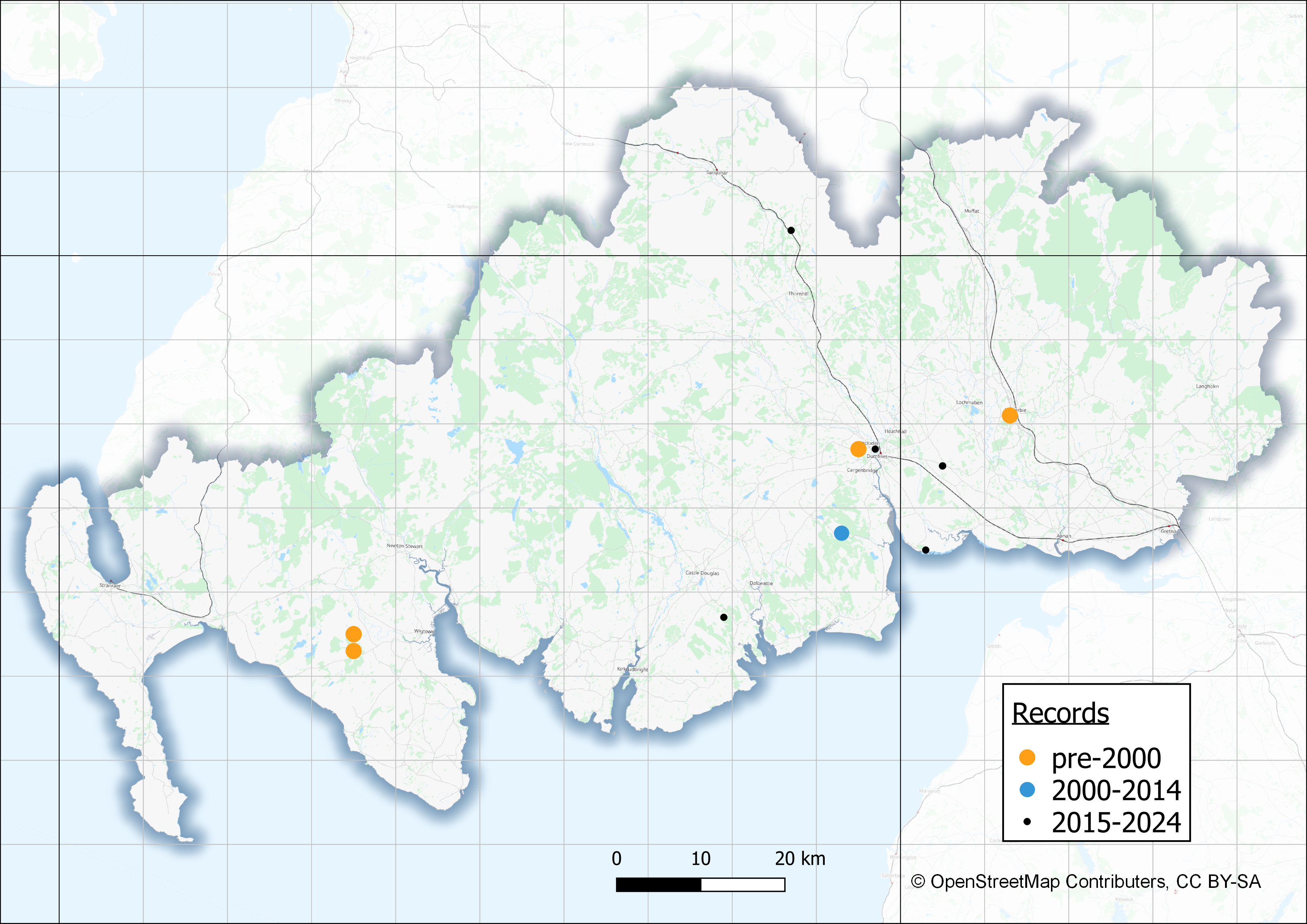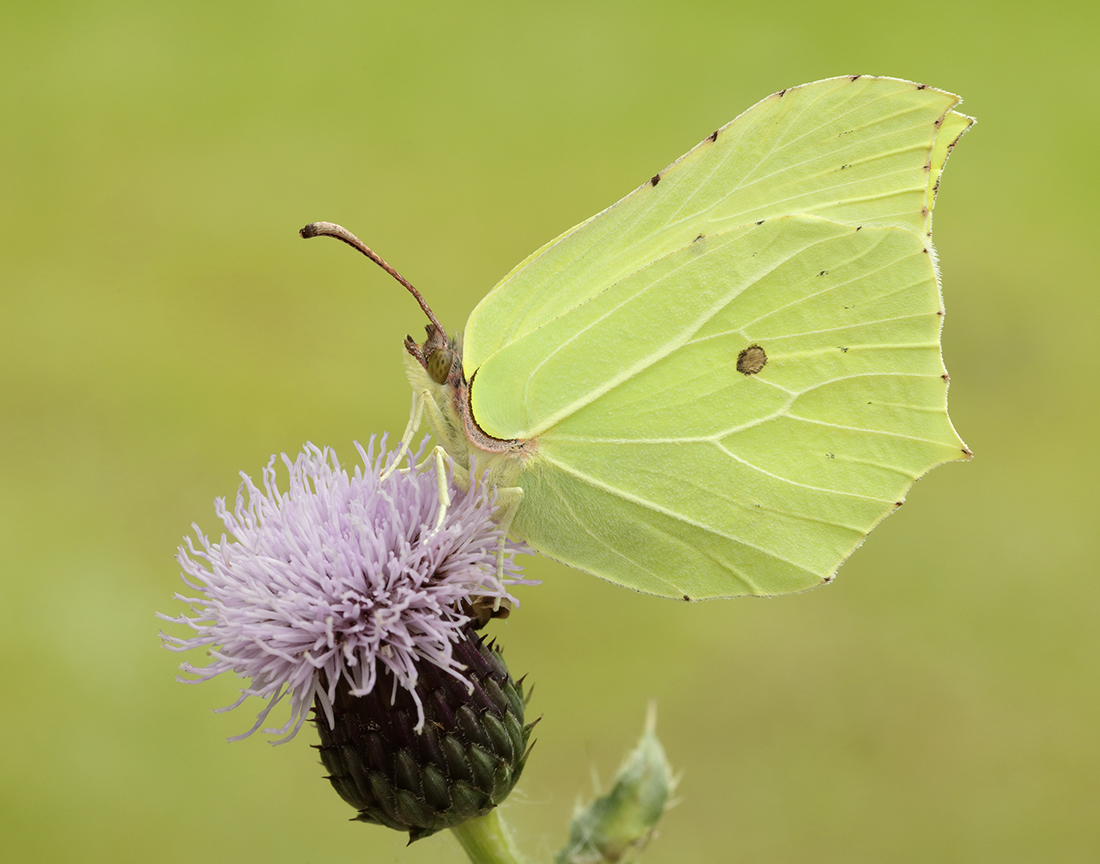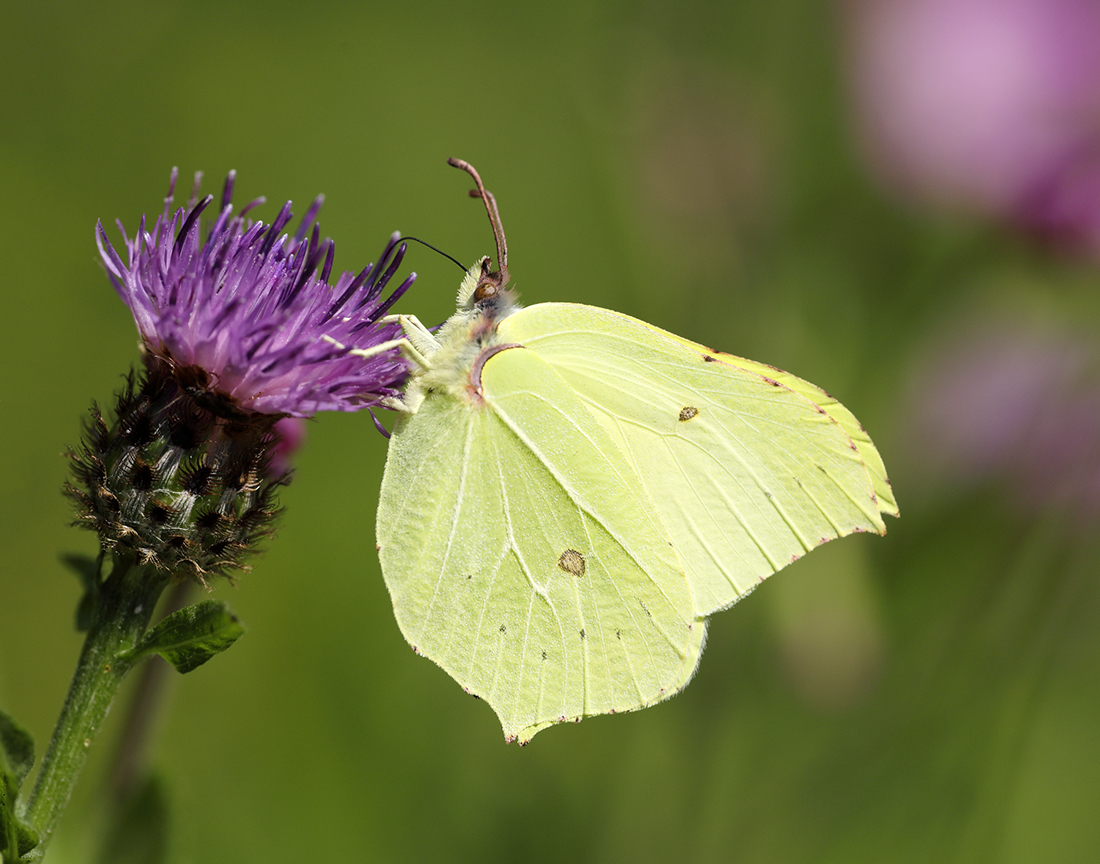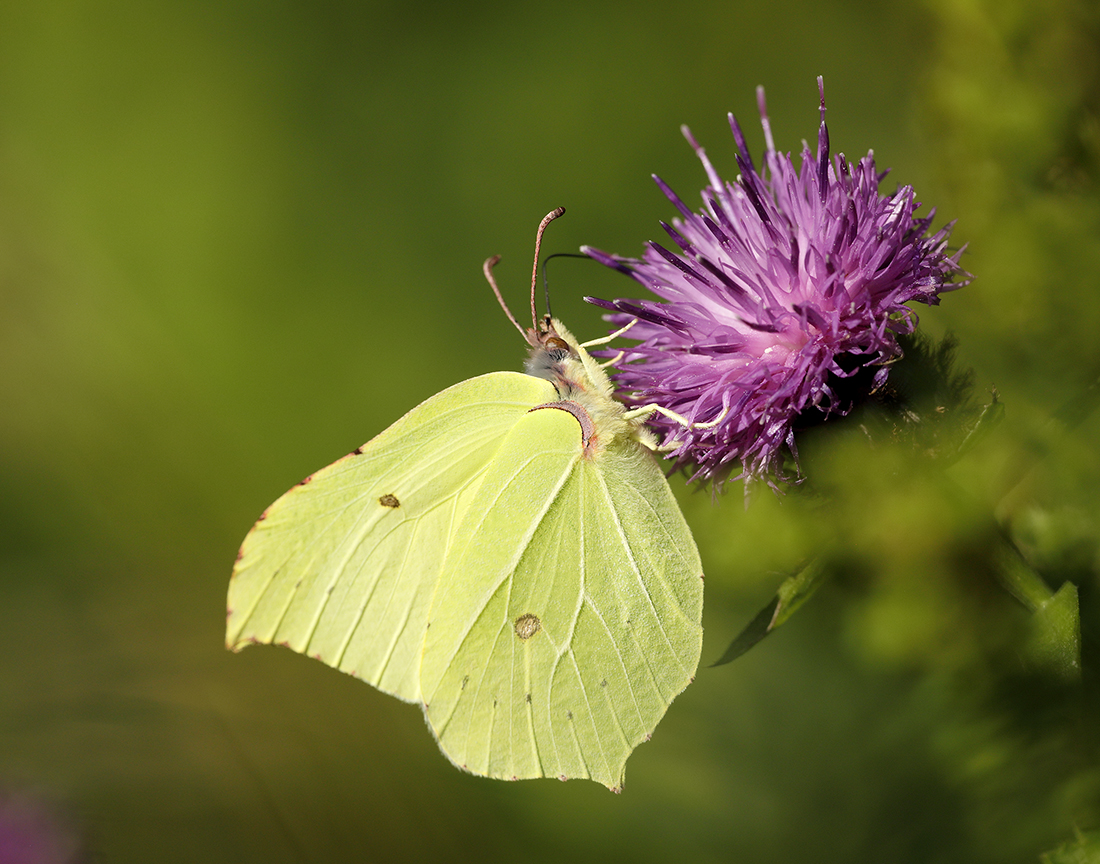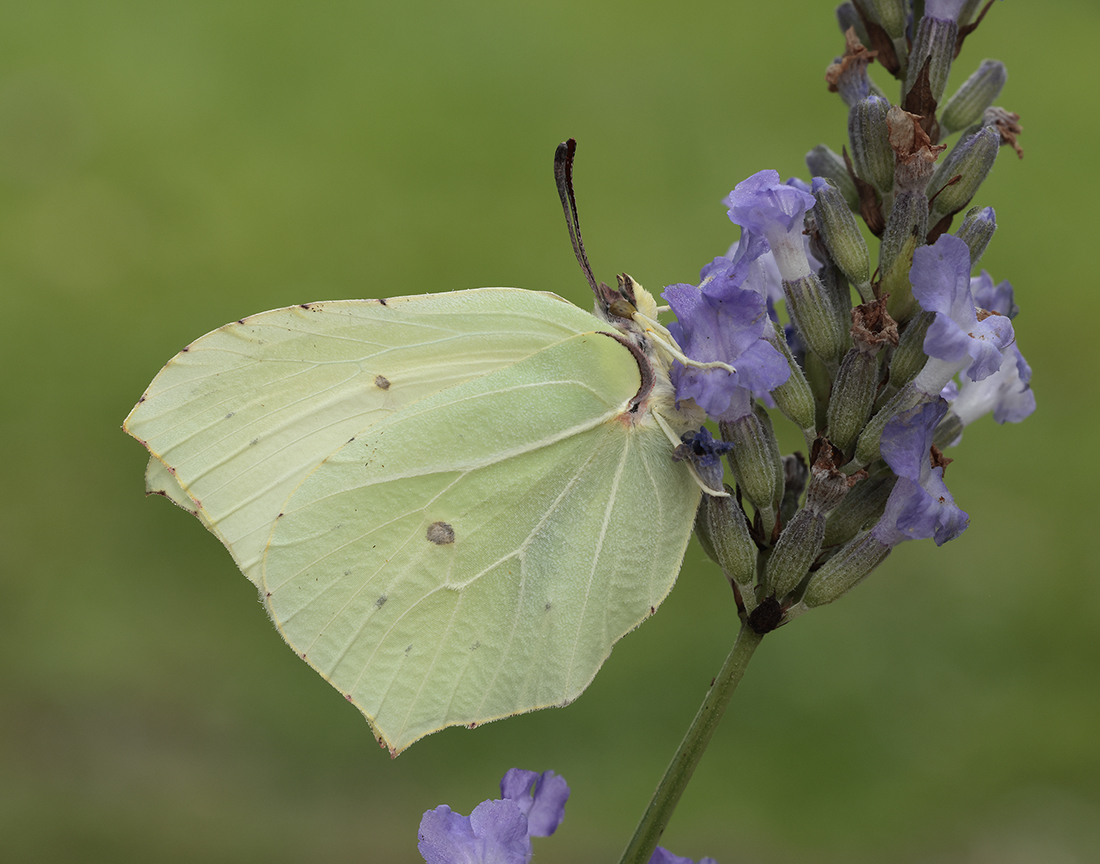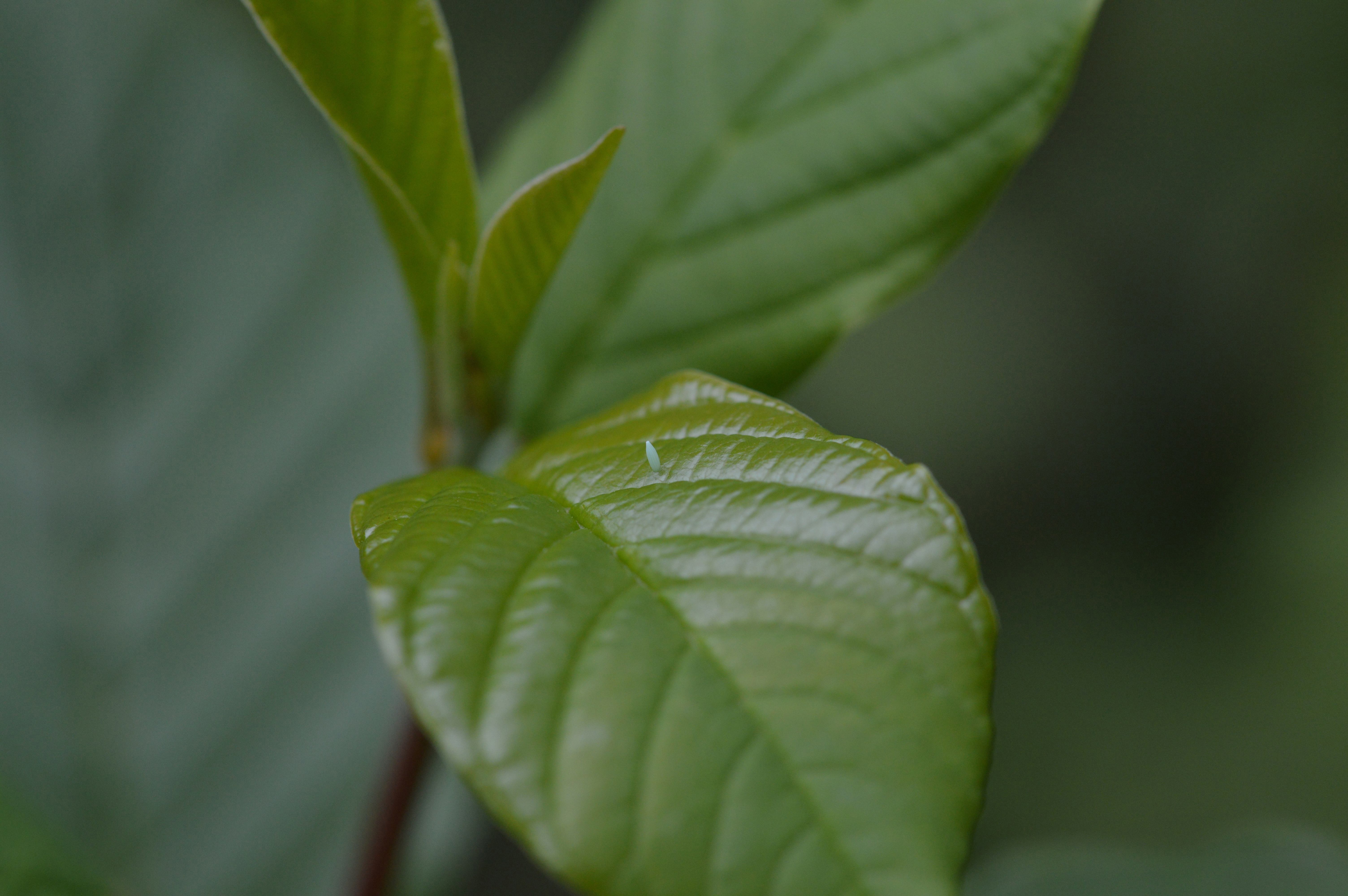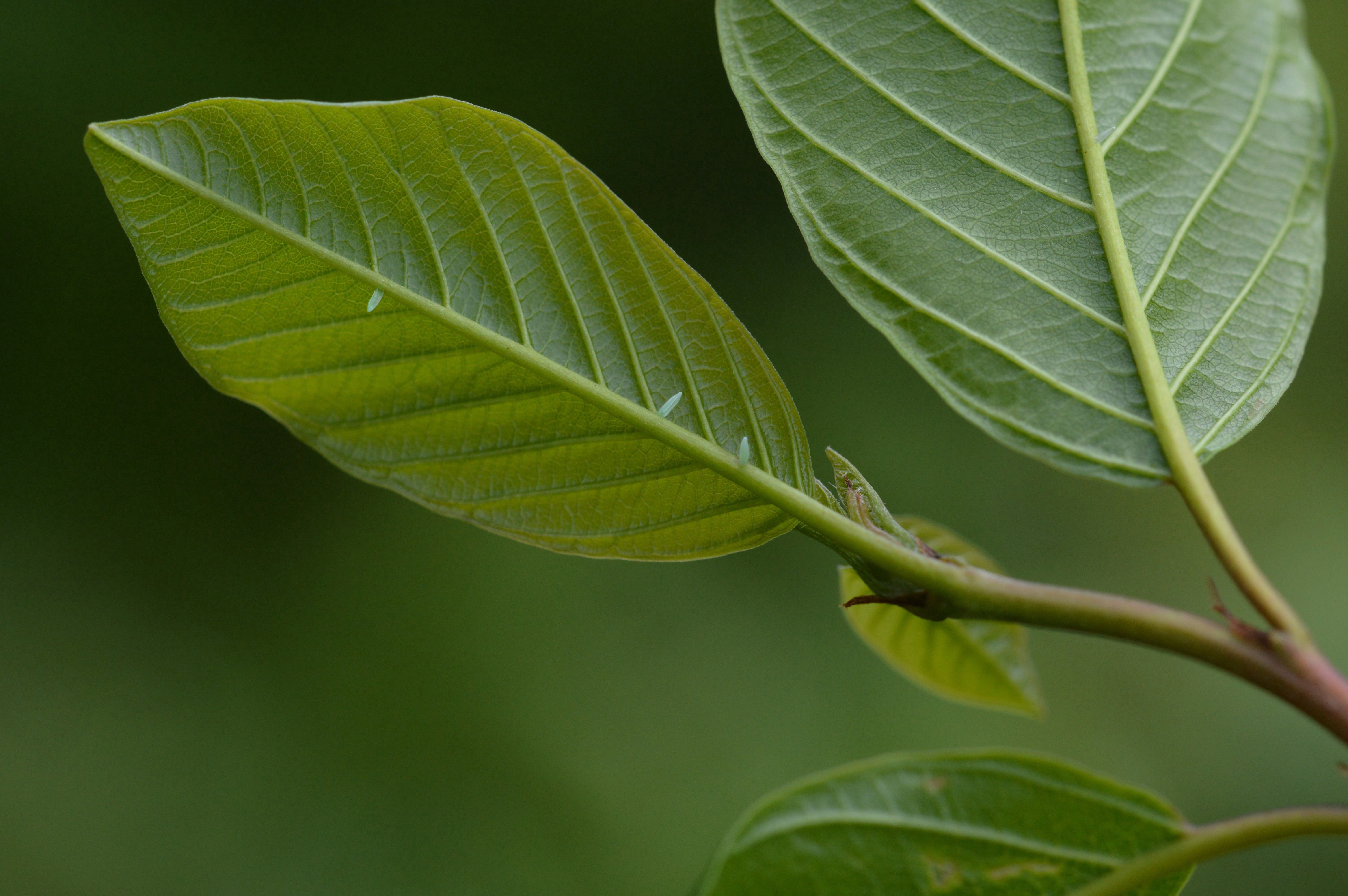Few sightings and current status unclear, but recent records of individuals from sites near Dumfries, Caerlaverock and Kirkcudbright. Brimstones are also seen occasionally in the Carlisle area, but again, the status of these records in unclear as to whether they represent an established colony in the area. Adult females were seen and eggs were photographed on Alder Buckthorn near Dumfries in June 2021 but no larvae were found on later visits.
There have been very few sightings in the past. Thomson (1980) reports a record made by R.S.Gordon in Corsemalzie in 1980 but describes the butterfly as a ‘possible migrant’
Identification
The Brimstone is a very conspicuous butterfly that overwinters as an adult and is one of the first species to be seen in the spring. The male is a bright lemon yellow butterfly, but the females can be a pale green and at a distance could be mistaken for a Large White.
Life cycle & flight period
One generation a year, the adults peaking between April and July, but they may be seen in most months of the year. The adults overwinter in woodland.
Larval foodplant
The Brimstone’s sole caterpillar foodplants are Common (or Purging) Buckthorn which grows on calcareous (lime-rich) habitats, and Alder Buckthorn which is found on more acid soils. Both are very scarce in our region and Common Buckthorn is not native in Scotland. However these two shrubs are sometimes planted in amenity schemes.
Habitats
The Brimstone is a very active and mobile butterfly, often seen away from its breeding habitats which are open woodland and areas of scrub. Where it is a well-established species e.g. in south Cumbria, it is often seen in parks and gardens.

